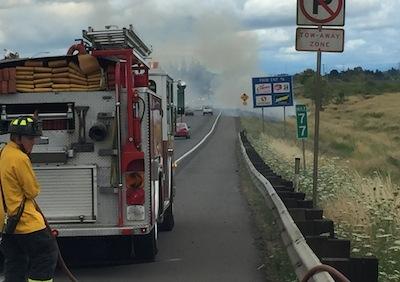- Departments
- Residents
- Business
- Visitors
Safety Guide for Drivers
Firefighters help drivers and passengers — and you can help them by giving them the space they need to respond to emergencies.
For many firefighters, the most dangerous part of any call is simply getting there. Up to 25 percent of annual firefighter deaths occur as they are responding to and returning from incidents and training. You can reduce this danger by making sure you’re staying out of the way and making it easier for firefighters to respond to calls.
- Move over: Having a fire engine behind you can be jarring and you may react by slamming on the brakes. But that doesn’t help fire departments get to an incident any faster. What you really need to do is move out of their way. You should pull calmly to the right as far as possible, remaining parallel to the curb, stopping when you’re out of the path of the fire engine. This gives them the most clear and wide possible path to get through and make their way to the emergency.
- Yield to fire engines and emergency vehicles: Keep in mind that emergency vehicles including fire engines may not be required to stop at red lights or stop signs. They may even be able to drive the wrong way down roads if necessary. Watch the emergency vehicle’s movements so that you can yield and stay out of the way.
- Look for additional emergency vehicles: Where one fire engine goes, others are likely to follow. If you’ve been passed by a fire engine, be sure to stay on high alert for other emergency vehicles that may not be far behind.
- Don’t drive over fire hoses: If you’re at the scene of an accident, be careful to never drive over a fire hose. Running over a fire hose can damage the hose and may interrupt the water flow, endangering the lives of firefighters. And hoses that are driven over without protection have to be taken out of service and tested. Firefighters will typically use fire hoses out of the way of traffic, but if you end up near one, be careful not to run it over.
- Don’t attempt to get into a blocked lane: Fire engines often block both an accident lane and an adjacent lane. This is done to create a safe work zone for emergency personnel and accident victims. Do not breach this safety zone by driving in the area. Instead, give firefighters and others in the area space to work.


